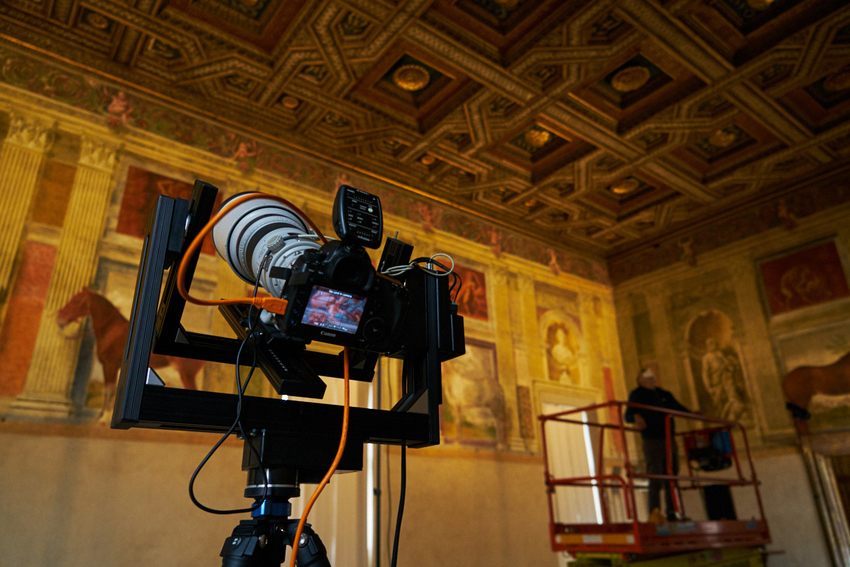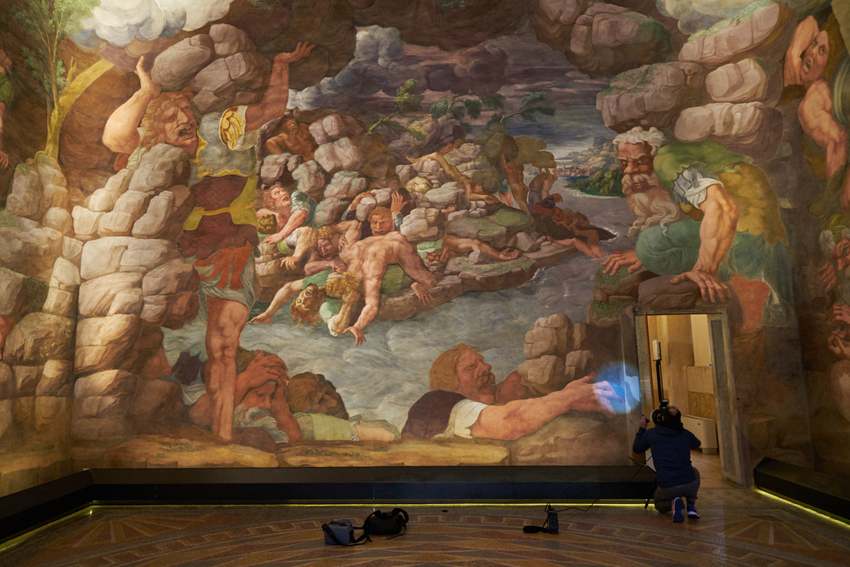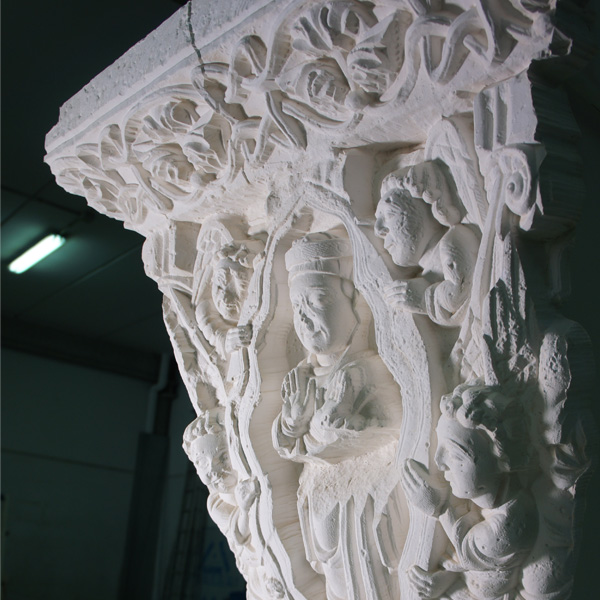A video by Oscar Parasiego for Factum Foundation
From January 17 until February 7 2022, a team of digitisation specialists from ARCHiVe and Factum Foundation will record in high resolution the Chamber of the Giants, the Chamber of Cupid and Psyche and the Hall of the Horses. The data, acquired using LiDAR, photogrammetry and composite photography, will belong to Fondazione Palazzo Te and help with the documentation, preservation, study and dissemination of the rooms, also enabling future diverse and innovative exhibition projects.
A brilliant pupil of Raphael, with whom he worked on the Vatican Rooms and many other works, Giulio Romano moved to Mantua shortly after the death of his teacher in 1520. Arriving in Mantua in 1524 as the official court artist of Marquis (later Duke) Federico II Gonzaga, he received the commission to “build a small residence to which he [the marquis] could retire sometimes to feast, or dine for pleasure” (G. Vasari, Lives of the Artists).
According to biographer Giorgio Vasari, the elaborate model that Giulio Romano presented to the marquis was enough for him to immediately begin construction, and the finished palace soon became a source of inspiration for artists and architects alike, thanks to its innovative designs and frescoed rooms.
Hall of the Horses
Probably frescoed between 1526 and 1528, this room was dedicated to welcoming guests and host the most important events. The life-size frescoes of horses that decorate the walls depict thoroughbred horses, which Duke Federico II gifted from his personal stables to the most prestigious guests and friends. The area of Palazzo Te was already in use as stables since the early 16th century by Francesco II Gonzaga, husband of Isabella d’Este and father to Federico II: father and son shared a common interest for horses and Gonzaga thoroughbreds were considered among the best.
A rich painted structure frames the horses, landscapes and busts. On the upper size, a painted bronze low-relief depicts Herakles' twelve labours.
Chamber of Cupid and Psyche
It is in this squared chamber that the purpose of the whole building is proudly declared in Latin: a place of respite and 'honest leisure' from the tiresome troubles of governing the province (“HONESTO OCIO POST LABORES AD REPARANDAM VIRT[utem] QVIETI CONSTRVI MANDAVIT”). The frescoes depict the story of Cupid and Psyche, taken from Apuleio's Metamorphosis, and were painted between 1526 and 1528.
Chamber of the Giants
The most famous of all the rooms of Palazzo Te was painted between 1532 and 1534 by Giulio Romano and his assistants: Rinaldo Mantovano, Fermo da Caravaggio and Luca da Faenza. The chamber as a whole is a work of art, from its shape (resembling a cave) to its highly theatrical and elaborate decoration spiralling from walls to ceiling, which aimed at leaving the guests in awe. The fight between the Olympic deities and the Giants, which saw Jupiter as a winner, can be read as a subtle political nod to the victories of Emperor Charles V over rebellious Italian 'signorie'. The Gonzagas, political allies of Charles V (and thus Jupiter), triumphed over rival provinces by allying themselves to the imperial side.

Pedro Miró recording the space in 3D using a LiDAR scanner © Oscar Parasiego for Factum Foundation

An elevated platform was rented to help with the close-range photogrammetry of the ceiling and the top sections of the walls © Gabriel Scarpa for Factum Foundation








